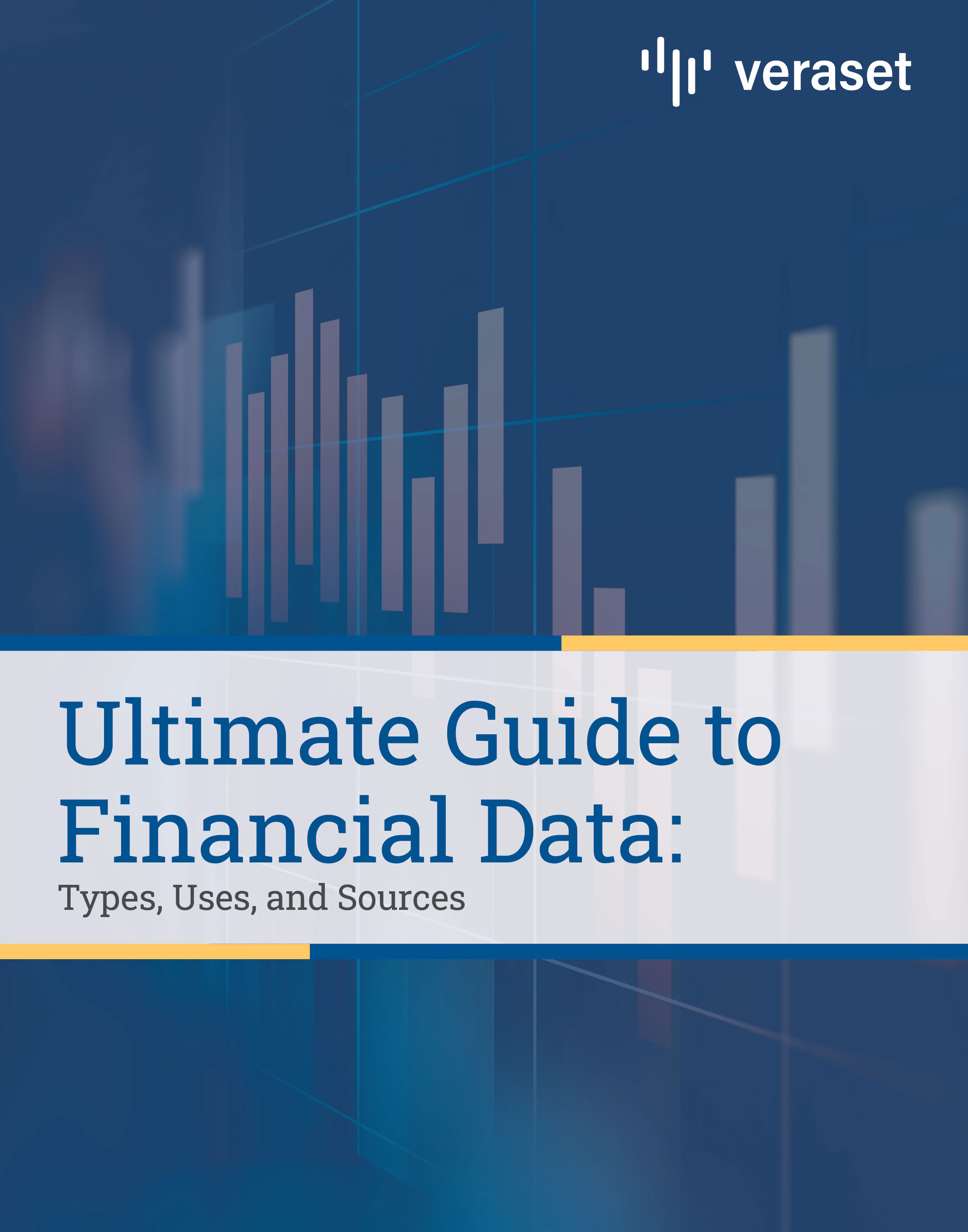Ultimate Guide to Financial Data:
Types, Uses, and Sources
Financial data is more than just a measurement of a company’s success. It’s also a valuable tool that can be used by the company, its competitors, and several other industries to inform numerous vital decisions. Which departments and systems should a company focus on improving? How can a company predict and outflank a rival’s business strategy? How much risk is a government, bank, investor, or insurer taking on in supporting a company? These are all questions financial data can answer.
There’s one other question on top of each of these that needs answering: does an organization know where to find financial data when and how they need it? It can come in some standardized forms and from some typical sources. But there are other types of data out there – collectively referred to as ‘alternative data’ – that many organizations are taking advantage of to boost their financial analysis. What does it look like, and where can it be found?
This ebook will offer a broad overview of financial data. It will explain what financial data conventionally consists of, and list what sorts of industries typically use it. It will also mention some common business functions financial data is used for, and illustrate why it is important to them. Lastly, it will offer examples of companies that sell curated financial data; this will include alternative data sources, along with an explanation of how their data can be a useful complement to traditional financial data.
Main takeaways in Ultimate Guide to Financial Data: Types, Uses, and Sources:
- Financial data relates to what a company owns, what it owes, and what it’s worth
- It influences decisions within the company itself, and sometimes competing companies
- It also influences decisions in banking, government, investing, insurance, etc.
- Most traditional financial data is produced or reported by companies themselves
- However, some third parties curate alternative data that can be used for financial analysis
- Financial data management is critical for several different business applications

Download our free ebook and learn how to supercharge your organization’s operations with big data!
Download eBook
By gaining a deeper understanding of financial and alternative data, you can make more facets of your organization more data-driven. You can also unlock new forms of financial analysis that allow you to assess the financial performance of an organization – whether that’s your own, a rival, or a company you’re looking at investing in – from unique angles. All of this can improve your organization’s decision-making with assessing your operational efficiency, and with weighing the opportunities and risks associated with specific business or investment strategies.
Here's a quick look at what's inside each section.
Chapter 1:
What is Financial Data?
We provide some general information on what financial data is and where it can be sourced from. We also briefly explain how financial data influences business decisions in various industries.
Chapter 2:
Types of Financial Data Businesses Commonly Rely On
We discuss some of the common forms traditional financial data comes in, and what each of them reveal about a company’s finances. We also introduce some alternative types of financial data, with a particular focus on how geospatial data is collected and what it can reveal.
Chapter 3:
How to Use and Manage Financial Data
We dive into more detail about some specific business applications financial data is used for. In addition, we give examples of industries where they’re typically used, and illustrate why effectively managing financial data is crucial for performing each of these functions.
Chapter 4:
Examples of Where to Find Financial & Alt Data
We list some examples of companies that curate financial and alternative data, making it easier to process for organizations that need it. Furthermore, we offer some sample use cases that each company’s data could be an asset for.
